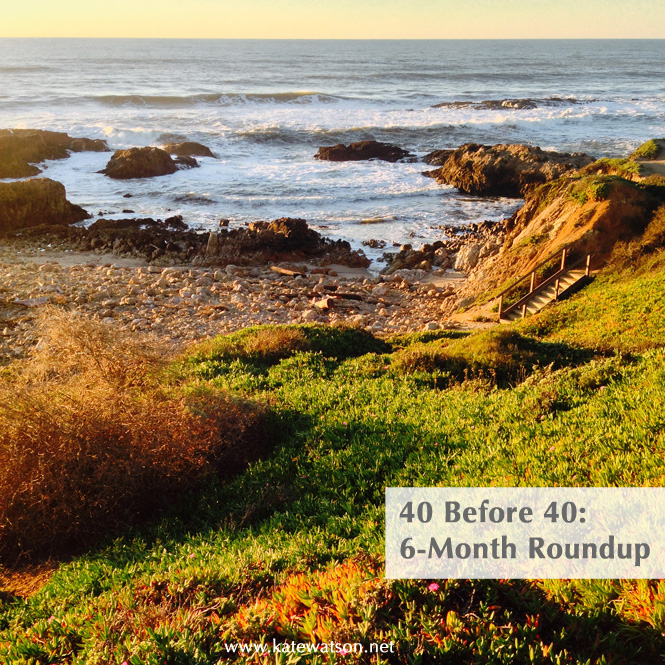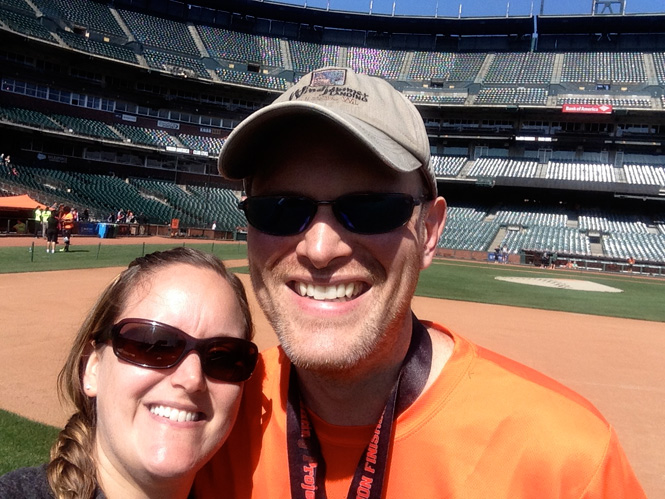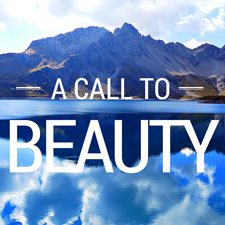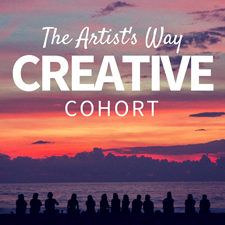Today’s inFocus interview is with David Greenlees, founder of Trellis Arch, a nonprofit working to improve the lives of children worldwide. An attorney and Lieutenant Colonel in the Marine Corps Reserve, Dave’s story demonstrates that one person can make a difference and that the best time to start is now, an apt message for this last week of 2014.

Dave, tell me a little bit about yourself.
I’ve been blessed to have such an incredible life. I’m 44 years old and have an amazing wife and two really cool daughters. I graduated from the George Washington University and was commissioned a Second Lieutenant in the U.S. Marine Corps. I served as an artillery officer for 7 years and then left active duty to attend law school in San Diego. I have remained in the Marine Corps Reserve since that time and am now a Lieutenant Colonel.
I worked as a Deputy District Attorney in San Diego for a few years and then as an intellectual property attorney. In 2007, we sold our home and I accepted a job as Chief Senate Legal Counsel in the Republic of Palau. There, I gained significant cross-cultural, tribal, and international experience.
In 2009, I came back on Active Duty in the Marine Corps and was assigned to the Office of Legislative Affairs (OLA) in the Pentagon. In 2011, I escorted Senators Levin and Webb to Tokyo and Sendai to survey the humanitarian relief and recovery efforts in response to the Tohoku earthquake and tsunami there. Touring the devastation was a perspective-shifting experience to say the least. It was life changing.
At the end of 2013, my time at the OLA was up and I had to demobilize from active duty. I knew that my next career had to be directly involved in international humanitarian relief efforts.

Dave and his beautiful family
What prompted you to found a nonprofit organization?
I applied to dozens of different positions in Washington, DC without any luck. Although everyone told me I was more than qualified, nothing panned out. I visited different NGOs and met with decision makers there. Despite the obvious need for free help, the opportunities to lend a hand were just not there. I became incredibly frustrated and decided to create my own opportunity.
I traveled to Kolkata, India in December 2013 and spent some time with International Justice Mission learning about the overwhelming crisis of human trafficking and sexual slavery that exists there. I spent a day with Mother Teresa’s Missionaries of Charity and saw the amazing things they do to alleviate suffering in the City of Joy.
If you measure success by the millions, you will fail to see the incredible things happening every day in India. It is an overwhelming place in every aspect. The plague of poverty continues despite Mother Teresa’s lifetime of service to the poor and the army of volunteers that follow in her footsteps even today.
Common sense would indicate that since poverty can never be fully destroyed, it is pointless to try. She believed otherwise, because it was never about an all-or-nothing solution to her. Ultimately, the most important thing to do is to start by helping one needy person at a time. That is what it is all about. A few days in Kolkata will change your life.
After leaving Kolkata, I spent a week traveling throughout remote West Bengal and Odisha with Dr. Faiz Rahman, the founder of Good News India (GNI). GNI runs 28 Dream Centers that provide 24/7 care and education for over 3,000 orphans. GNI rescues orphans from bonded slavery and provides them with a safe place to live and learn, ultimately seeing them through a college-level education. Some of these children are “virtual orphans,” meaning their parents may still be alive but have abandoned them.
After hearing many of the horrific stories of their lives before coming to GNI, I expected to encounter despondent and fragile kids. I was overwhelmed by the smiles and hugs these kids gave me when I arrived. They radiated more enthusiastic hope and joy than I’ve ever encountered anywhere. I knew immediately that I had to dedicate my life to providing the same resources and opportunities to as many at-risk kids as possible.

Kampala, Uganda, where Trellis Arch is in the process of developing a school-building project with Hope Street, which provides resources to homeless children living on the streets of one of the most dangerous slums in Africa.
What is Trellis Arch and what do you do?
Tellis Arch is a non-profit organization created to alleviate suffering and eradicate the root causes of poverty and injustice wherever it exists. We support and cultivate the lives of at-risk children by providing them with the resources they need to escape poverty and achieve their dreams.
We believe that every child should have access to nutritious food, clean water, a safe place to live, and adequate medical care. In many places, all or some of these important aspects of survival are not available. The cycle of poverty continues to oppress millions of children worldwide who lack the things many of us take for granted.
Trellis Arch identifies communities where these resources are lacking. We develop sustainable infrastructure alongside our local partners to ensure growth is possible, like a trellis does in a garden. Our ultimate goal in every project is to add the most important resource of all: education.
Worldwide, 775 million adults (approximately 12% of the world’s population) are considered functionally illiterate, with only basic or below-basic literacy levels in their native languages. Upward social movement is nearly impossible. Millions of children lack basic literacy and numeracy skills. Education is the one thing that breaks the cycle of poverty and empowers young boys and girls in remarkable ways. It spans wide spaces, like an arch does, and connects them with every possible opportunity for success. Educated children become adults who can help themselves.
We believe every child has value and purpose; every child has something to offer; and every child can make a difference in the world if given the right resources.
We have projects in Uganda, India, Nepal, Palau, and Haiti:
- We are working with Hope Street in Kampala, Uganda to provide homeless boys with a safe place to stay in order to provide them with the resources they need to learn life skills and to receive an education.
- Our India projects are focused on providing the most vulnerable children (young girls) with educational opportunities.
- In Nepal, we are sponsoring projects to assist Tibetan refugee children living in Kathmandu.
- In Palau, we are working on delivering a portable saw mill to the island of Kayangel in order to assist with clearing thousands of downed trees left over from the devastation of Super Typhoon Haiyan in 2013.
- In Haiti, we’ve identified a village in Port-de-Paix that is in dire need of a water pump. Without water, the village cannot sustain itself for long. A pump will deliver water to homes and to the fields for farming. Ultimately, ready access to water means that children can spend their time in school instead of hunting for water from streams miles away.

Trellis Arch’s Haiti water pump project
We also sponsor local service projects here in Frederick, Maryland to assist with the needs of those in our own community. We are developing a summer camp program in North Carolina for at-risk children that we hope to debut in the summer of 2015.
As you can see, we have a variety of very important projects that impact their communities in different ways. Our mission is to provide sustainable results that are built and managed by local communities.
What makes Trellis Arch unique?
We are helping a child that someone else isn’t. There is no limit to the work that needs to be done. The scale of issues associated with global poverty requires an ever-increasing amount of attention. We identify an unmet need and work towards providing resources in a sustainable way.
I can think of nothing more important than alleviating a child’s suffering, providing him/her with love and hope, and equipping him/her with all the tools he/she needs to build a successful future.
We measure our success one child at a time. Saving a child from human trafficking and exploitation in India, bringing water to a village in Haiti, educating young boys in Uganda – all of these things can be accomplished with a small amount of resources. The work is challenging, rewarding, and fun. The benefits are measured in smiles.

About his work, Dave Greenlees says, “The benefits are measured in smiles.”
What have you learned? Is there anything you wish you knew before you started?
Nobel Peace Prize winner Mohammed Yunus writes, “Almost any personal passion can be transformed into a vehicle for making the world a better place.”
I couldn’t agree more but never knew how to get started. I quickly learned that the secret to moving forward was just to begin. There is no better time than now to get rolling. Once you get a little momentum, your ideas can become realities. Biggest lesson learned: don’t hesitate, act now.
In the five months since Trellis Arch’s founding, I have come to realize that I have much to learn about fundraising. I’ve learned that you cannot solely rely on Facebook or crowdfunding websites to raise awareness and money. You have to step away from the laptop and talk to people one-on-one.
There are countless opportunities to connect with people who share your vision – but you need to talk with them in person, shake their hand, and look them in the eye if you want to make a real impact. I consider myself a storyteller, not a salesman. The stories I tell inspire people to act through volunteering, spreading the word, and sometimes writing a check. Because our projects are so incredibly important, I now realize that I also need to become a better “salesman” despite my disdain for that term.
The bottom line with any charitable organization is raising revenue to fund projects. Our organization has no overhead and everyone serves without compensation. This allows us to dedicate funds directly to programmatic expenses.
I run Trellis Arch from my home and do not receive a salary. We certainly hope that we can generate enough revenue to build a staff of paid employees in the coming year, but that is far off at this point. When we reach that milestone, we will ensure that a minimum of 85% of our revenue is always dedicated to funding our projects – without exception. Having reviewed dozens of public documents on Charity Navigator’s website, I was surprised to see the significant administrative expenses and grossly inflated salaries associated with many non-profits that I assumed were efficient models of charity work. It was an eye-opening experience.
We are committed to ensuring that we are always good stewards of the resources entrusted to us. All of our financials will always will be open for public scrutiny. People should expect that from the charitable organizations they support.
After incorporating Trellis Arch, I recruited an incredible team for our Board of Directors. I couldn’t ask for a more diverse and skilled group than we have now. I’m proud of the unique perspective, expertise, interests, and personal beliefs that our Board Members bring to the table. In any endeavor, surround yourself with people who don’t see everything exactly the same way you do. Contrast sharpens vision.
I learned that the application for tax-exempt status from the IRS is a burdensome, time-consuming, and expensive process to initiate – but you can do it yourself. If you are willing to take the time, you can do anything yourself.

In Kathmandu, Nepal, Trellis Arch partners with a school for displaced Tibetan girls.
What’s next for Trellis Arch? What’s your big picture goal?
We recently received our 501(c)(3) determination letter, so now we are seeking investment capital from donors. Unlike a for-profit endeavor, we are a social business that seeks to harness capitalism to fulfill desperate human needs in order to eradicate poverty from suffering communities. In that regard, I’ll meet with anyone that wants to learn more about the importance of this effort and how they can make a difference.
Although we are just getting started, we have an ambitious “big picture” agenda for the years ahead. We seek to:
- Raise $1.2M annually through corporate donors, grants and individual contributions
- Build sustainable, residential schools for at-risk children in struggling communities in India, Uganda, Haiti, and Nepal
- Assist in providing people at these locations with access to clean water, nutritious food, safe housing, and adequate health care resources
- Create short and long-term “hands-on” volunteer opportunities for team members in the US and overseas
- Establish an interwoven network of projects that build and reinforce self-sufficient communities
- Raise awareness of the world’s overwhelming needs through creative outreach programs
- Empower children everywhere with literacy and numeracy skills to break the cycle of poverty
- Partner with like-minded organizations to tackle the root causes of poverty, injustice, and suffering
How could someone else get involved in this work?
There are many ways to get involved with Trellis Arch. You can volunteer, organize an event, raise funds, build awareness, and so much more.
Take a look at our website, www.trellisarch.org, for more information about our team as well as our projects and volunteer opportunities. If you or your group is interested in sponsoring a Trellis Arch project, we would be glad to show you how exciting and rewarding this can be.
We are always looking for ways to expand our reach and I will travel anywhere to speak to any group about our work. You can make a significant impact in the lives of at-risk children around the world. Let us show you how it’s done.
If you are considering starting your own project, I’m always happy to provide my perspective. Wisdom is the most valuable thing anyone can receive. Someone else has been down a similar path. Seek them out and listen.
This month’s blog focus is self care. How do you practice self care while doing this work?
I follow a vegan diet and I enjoy cycling. Every mile is meditation and exercise for me.
It is easy to get caught up in work and neglect yourself in the process. The beauty of doing something you love for a living affords you the added benefit of finding joy in your daily tasks, no matter how frustrating or mundane they may be. Now if I could only incorporate vegan cooking or cycling into a fundraiser…
To learn more about Trellis Arch and the work they do, please visit their website, http://www.trellisarch.org, Facebook page, or follow Dave on Twitter.
If you like this post, please like it or share it. If you have an exciting project coming up in 2015, please share in the comments.
Cheers,
























